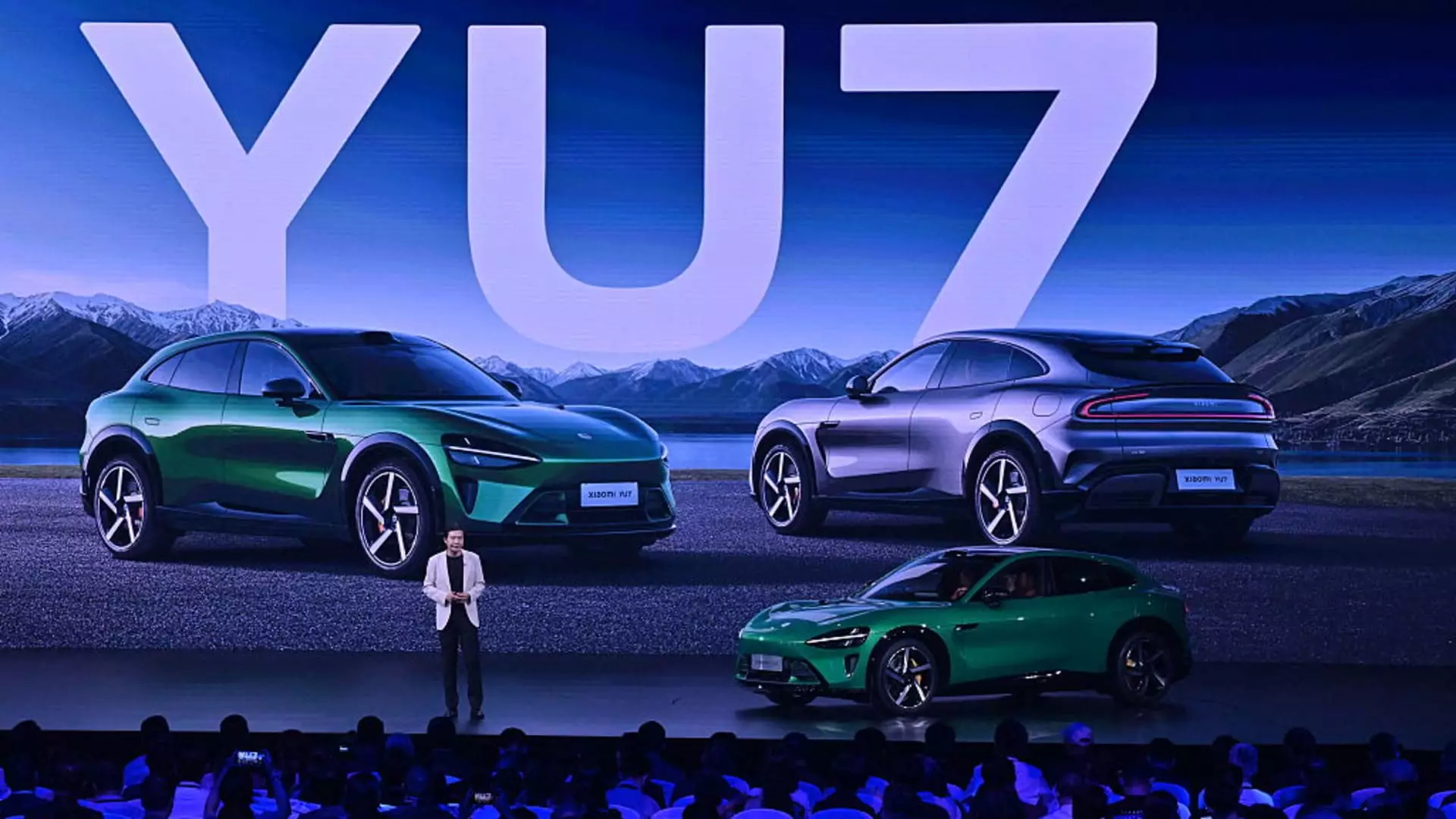In the realm of electric vehicles (EVs), competition is fierce and relentless, particularly in a market as dynamic as China. Xiaomi, originally celebrated for its smartphones, has audaciously stepped into this electrifying sector, bold enough to challenge one of the largest names in the industry—Tesla. The launch of their YU7 SUV marks a significant milestone for the company, yet the implications of this move extend far beyond just another model on the market. Xiaomi’s ambitions signal not just a mere entry, but a calculated strategy to disrupt the status quo traditionally dominated by Tesla.
Range Anxiety: The Game-Changer
At the forefront of Xiaomi’s marketing strategy is the YU7’s impressive driving range of at least 760 kilometers (472 miles) on a single charge—a feature that brings it neck and neck with Tesla’s extended-range Model Y. This focus on alleviating range anxiety reflects a growing consumer concern; potential buyers are often daunted by the prospect of frequent recharging. It’s a telling indication of how Xiaomi plans to carve out its niche among consumers who have been early adopters of EV technology. As analyst Jeff Chung posits, Xiaomi’s YU7 could prove to be a formidable opponent to Tesla by eroding its market share in China—a country where Tesla has held a commanding lead.
The Economic Landscape and Pricing Strategy
Xiaomi’s pricing strategy for the YU7, estimated between 250,000 to 320,000 yuan (around $34,700 to $44,420), puts it in direct competition with Tesla’s Model Y, which starts at 263,500 yuan. This tactical pricing is a smart play to draw in consumers who may be hesitant to invest more in a Tesla. The anticipated monthly sales of approximately 30,000 units speak to the company’s confidence in its ability to penetrate an already saturated market. If these projections hold, annual sales could reach upwards of 360,000 units, showcasing Xiaomi’s conviction in the viability of its electric venture.
The Luxury Positioning and Market Dynamics
Positioning the YU7 as a “luxury SUV” adds an intriguing layer to this narrative, especially as Xiaomi seeks to redefine what luxury means in the EV segment. Luxury, in this context, could translate to more than just price; it suggests an experience, an image, a lifestyle. Elinor Leung’s insights into the potential superiority of YU7 sales compared to its sedan counterpart, the SU7, indicate an evolving consumer preference toward SUVs over sedans, which could radically alter the competitive landscape.
However, this strategy isn’t devoid of risks. Xiaomi’s foray into this market comes alongside its recent struggles—the tragic accident involving an SU7, along with market fluctuations affecting sales. The increased scrutiny around advertising for driver-assist systems might also hinder their marketing approach, heightening the stakes for Xiaomi as they attempt to enhance their image amidst these tumultuous challenges.
The Larger EV Narrative in China
Xiaomi is entering a battlefield where heavyweights like BYD and emerging challengers such as Xpeng are relentlessly innovating and capturing market attention. The shifting landscape, with BYD’s economically appealing models like the Seagull and the much-lauded Wuling Hongguang Mini, showcases the diverse preferences of Chinese consumers. The rivalry is not just between brands; it encapsulates a broader contest of technology, infrastructure, and consumer experience. With every new model launch, companies must adapt and rethink their strategies.
Meanwhile, the anticipation surrounding the unveiling of Xpeng’s enhanced capabilities for the Mona M03 further amplifies the competitive pressure on Xiaomi. In this fast-moving sector, the space between leading and lagging can hinge on factors as intangible as consumer perception and brand loyalty.
Xiaomi’s Reckoning: A Tech Giant or Just Another Player?
Xiaomi’s foray into the EV world certainly raises eyebrows; many are eager to see if this tech giant can live up to its bold claims. The question remains: Is Xiaomi merely another player in the vast automotive landscape, or can it leapfrog established names by capitalizing on its technological prowess? The desire for innovation and consumer-oriented solutions is palpable, and while the odds may seem tall, the EV revolution is dynamic enough to allow for surprising shifts.
This moment is more than just a launch—it’s a reflection of industry trends and consumer expectations evolving at breakneck speeds. Xiaomi’s next steps will not merely determine the fate of the YU7 but may also redefine the landscape and the perceptions surrounding electric vehicles in China altogether.

